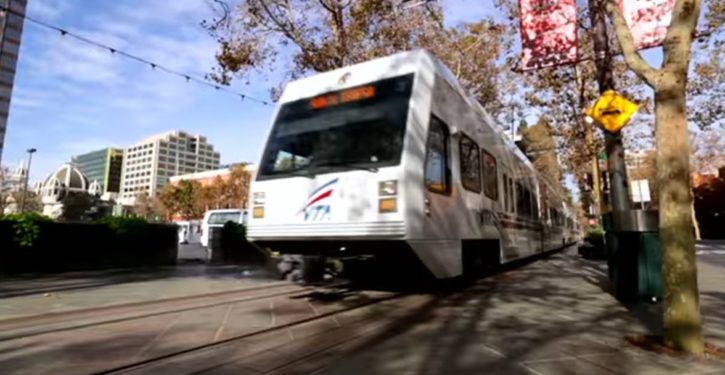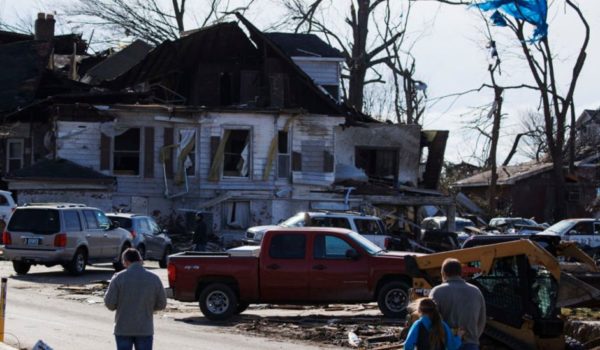
A California state appeals court has ruled that voters can be lied to about what public money will be spent on, and there’s no legal remedy for it. From the Orange County Register:
If ever voters needed a reason to vote no on every single bond measure that appears on the ballot, here it is: The Court of Appeal for Third Appellate District just ruled that, despite all the lies voters were told about California’s infamous High-Speed Rail project, taxpayers have no remedy, even though the project as it exists today bears no relation to what voters were told when they approved the $9.9 billion bond in 2008. Californians were promised a super-fast train that would travel between Los Angeles and San Francisco in about two and a half hours; the ticket price would be about $50; the total cost of the high-speed rail would be about $40 billion; and there would be significant private-sector support –money from investors — to build the project.
Even before the 2008 vote, transportation experts were warning that the project would become a massive black hole into which California taxpayers would be committed to pouring hundreds of billions of dollars. In fact, a 2008 study sponsored by the Reason Foundation and the Howard Jarvis Taxpayers Foundation predicted that the promised total cost of $45 billion would quickly turn into $100 billion or more, stating that “There are no genuine financial projections that indicate there will be sufficient funds.”….
In Tos v. State of California, the court ruled that even though nothing the voters were promised in 2008 could possibly become true, the bonds could now be sold to finance the project. There is a disturbing message here for all California voters and taxpayers. When it comes to bond measures, nothing that is promised in the law authorizing the bond is worth the paper it is written on….Even more disappointing is the fact that whenever a state or local government spends bond funds for a project that deviates in substantive ways from what was described in the ballot material presented to the voters, there will be no legal remedy. The voters’ only option to prevent this bait-and-switch is to adopt a policy of blanket rejection of all bond measures.
The court’s ruling creates an even greater incentive for public entities to misrepresent what bond measures will accomplish. If they can secure initial voter approval, no judge in California is going to interfere once the project has started construction. This is the cynical playbook used by the HSR Authority, which followed Willie Brown’s advice. The former Assembly Speaker, in a moment of candor, once told the San Francisco Chronicle, “In the world of civic projects, the first budget is really just a down payment. If people knew the real cost from the start, nothing would ever be approved. The idea is to get going. Start digging a hole and make it so big, there’s no alternative to coming up with the money to fill it in.”
In June, the Biden administration announced that it had restored a federal grant for this so-called “high speed” rail project, even though it has been plagued by environmental lawsuits, delays, and cost overruns. The grant had been canceled under the Trump administration, which pointed out that the project was a “disaster” due to delays and ever-rising costs. As the Las Vegas Review-Journal noted, the rail project’s cost had more than tripled to $100 billion, and completion dates had been pushed back by more than a decade.
“The state’s political class bamboozled voters into approving a high-speed rail project intended to ultimately connect Los Angeles with San Francisco. Construction was supposed to be completed early this decade, and residents were assured that the shiny new ‘clean energy’ train could be theirs for the low, low price of $30 billion,” said the Review-Journal. “Instead, the project is more than a decade behind schedule and is now projected to cost $100 billion…and counting. Officials now hope they can complete a 171-mile stretch between Bakersfield and Merced by the end of the decade.”
That 171-mile stretch will likely be the only part of the project that is ever completed. But few people will ever travel that remote stretch by rail. It runs between two cities that are already connected by a speedy highway, Route 99. It only takes a little over two hours to drive from one city to the other. Merced has only about 80,000 people, so it is not a frequent destination. It’s a city with an extremely high poverty rate, that attracts few tourists or business travelers.
This rail project is so expensive that it will cost more to travel by train than by airplane, even though traveling by train is slower. As the Review-Journal notes, “high-speed” rail can’t “compete with air travel in terms of time or price.” Reason Magazine says California’s “high-speed” rail system “will have ticket prices higher than airfares and will take nearly twice as long as flying.”
The rail project will also harm the environment. The Review Journal calls it an “environmental nightmare.” As the Daily Wire notes, “During the project’s more than 10-year life so far, it has been sued multiple times by environmentalists for harming wildlife along the proposed route.”
Cars and buses use less energy per passenger-mile than the little-used trains will, and building the rail line results in greenhouse gas emissions. Operating high-speed rail will “take massive amounts of electricity,” “raising questions about the power grid’s ability to meet the demand,” says the Fresno Bee. “High-speed trains require huge amounts of infrastructure” compared to a “four-lane freeway,” says a transportation expert.
Bullet trains aren’t worth the cost. South Korea abolished its celebrated high-speed rail line because it couldn’t cover even the operating costs of keeping the trains running. Despite Japan’s much-vaunted bullet trains, most Japanese don’t take the bullet train either; they take buses because the bullet train is too expensive. Bullet trains interfere with freight trains, so Japanese freight trains carry less cargo than in the United States, where railroads—rather than trucks—carry most freight. (Trains emit less pollution per unit of freight carried than trucks do).
Using rail lines for high-speed rail can harm the environment, by crowding out more environmentally-friendly freight trains. As businessman Warren Meyer notes:
The U.S. rail system is optimized for freight, vs. European and Japanese systems that are optimized for passengers (it is hard to do both well with the same network). The U.S. situation is actually better, much better, for energy conservation. I wrote in detail about this before:
First, consider the last time you were on a passenger train. Add up the weight of all the folks in your car. Do you think they weighed more or less than the car itself? Unless you were packed into a subway train with Japanese sumo wrestlers, the answer is that the weight of the car dwarfs that of the passengers it is carrying. The average Amtrak passenger car apparently weighs about 65 tons (a high speed rail car weighs more). The capacity of a coach is 70-80 passengers, which at an average adult weight of 140 pounds yields a maximum passenger weight per car of 5.6 tons. This means that just 8% of the fuel in a passenger train is being used to move people — the rest goes into moving the train itself.
Now consider a freight train. The typical car weighs 25-30 tons empty and can carry between 70 and 120 tons of cargo. This means that 70-80% of the fuel in a freight train is being used to move the cargo.
Trains are inconvenient for most commuters. Mass transit carries only 3 percent of all commuters to work, a percentage that keeps falling despite growing spending on it.
Freight trains are convenient for shipping heavy goods long-distance. Most of America’s freight railroads build and maintain their infrastructure with little or no government assistance.
Biden’s $2.5 trillion infrastructure plan could harm freight railways. It would result in U.S. companies spending $1 trillion less on private infrastructure and fixed investment, such as privately-owned freight railways and power stations. That’s because it would raise the corporate tax rate, leaving freight railways and power companies with less money to invest. That tax increase would drive some firms overseas, costing America jobs and tax revenue.



